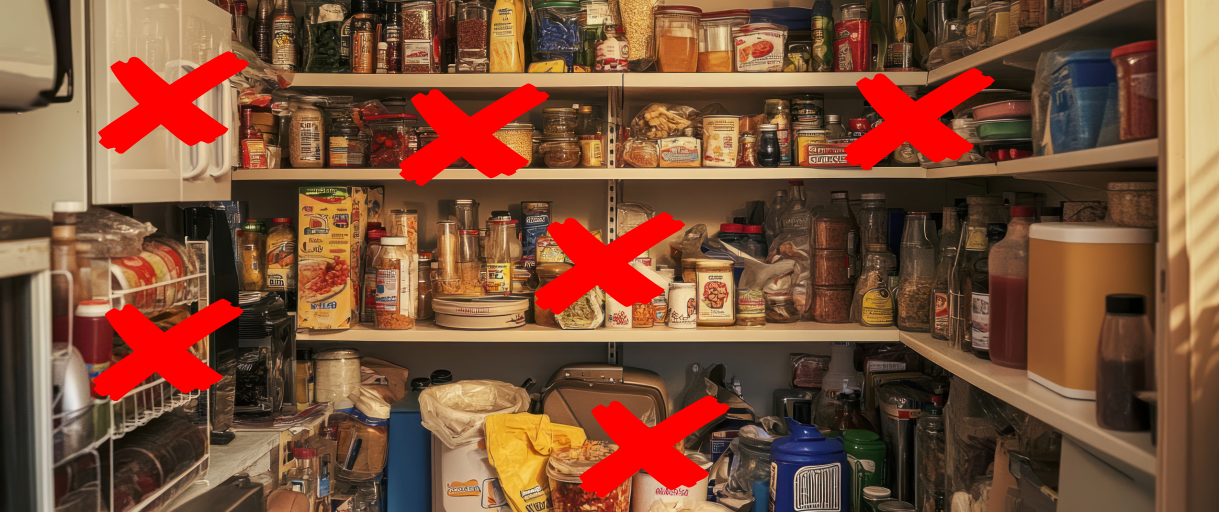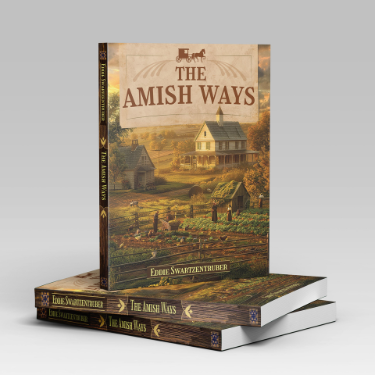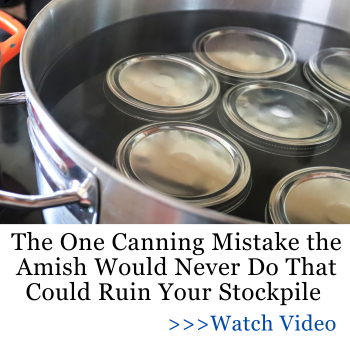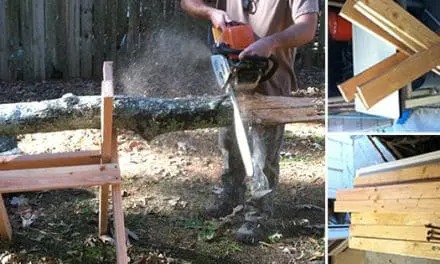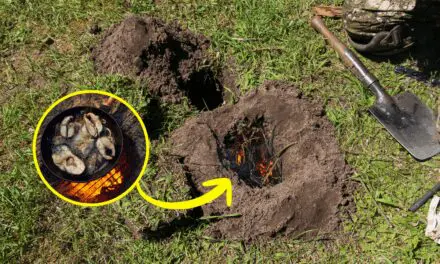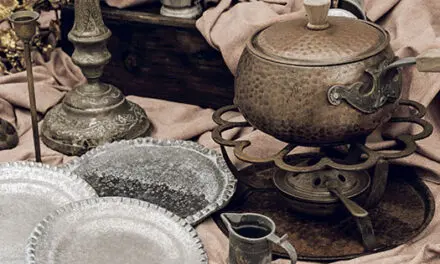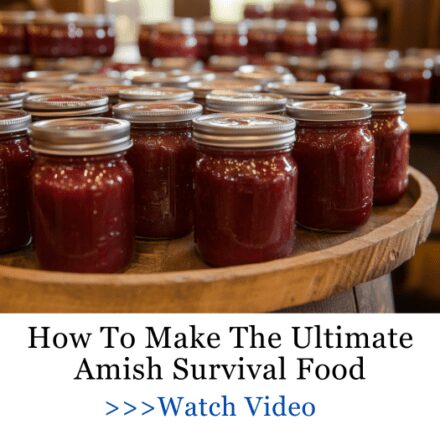Many people think they’re protecting their food by storing it a certain way. But what if that common method is actually turning your safe food into a hidden danger?
The truth is, a simple mistake in food storage can invite toxins, dangerous mold, or harmful bacteria that could make your next meal a serious threat to your health.
Before you risk your health, find out which common storage habits could be turning your food into a hidden threat.
The Storage Mistakes That Could Turn Your Food Into Poison
A standard practice for many homesteaders is long-term food storage. There are numerous techniques and guidelines for safe and effective food storage, but even when the basic rules are followed, things can go wrong if you don’t pay close enough attention. The result can be varying degrees of toxicity that can not only spoil the food, but lead to food born illnesses and even death. Here are some of the common toxins that can appear in stored foods with the primary threat coming from bacterial or microbial growth:
- e-coli
- Salmonella
- Listeria
- Botulism

All are serious to various degrees, with botulism as the most life threatening.
Some other toxins can emerge from molds and fungus. These include:
- Aspergillus
- Black mold/Stachybotyrs
- Botrytis
- Fusarium
- Cladosporium
There are more but the threat from mold comes from mycotoxins that are in fact poisonous. A variety of factors can lead to any one or a combination of these toxic microbes and molds.
There are standard tests for assessing food storage quality, including an assessment of the appearance of the food, smell and the taste. That’s a good idea, but it’s not a fool-proof guarantee that the food is safe. Worse, even though it might look good and smell good, it could harbor toxic microbes that make tasting it a bit of a risk.
The reasons these microbes or molds appear vary, but are worth taking note of, especially if you’re aggressively storing significant amounts and varieties of foods. Here are some key things to keep in mind.
⚠️ Your food storage might be hiding deadly toxins—and most won’t know until it’s too late. The Forgotten Home Apothecary reveals secret herbal remedies trusted for generations to fight illness naturally and keep your family safe. Copies are limited, and this rare knowledge won’t be available forever. Don’t wait—click here to get your copy now before it’s gone!
Improper Food Preparation
Before any food is packaged, processed or stored, it usually requires some degree of preparation. At a minimum it should be well washed, but often the prep involves cooking, curing, adding hot liquids, cutting or slicing or some other preliminary step. These preliminary steps usually remove existing bacteria present on the raw food. It doesn’t guarantee long-term food safety, but at least reduces the number of microbes or mold spores present.
The rare exceptions include root vegetables stored in a root cellar. The are some recommendations that root vegetables should not be washed before storage in a root cellar. They’re washed when pulled from the cellar, but leaving the dirt on root vegetables in a cellar is an exception.
What to do instead:
Always thoroughly clean or properly cook foods before storage to reduce initial contamination. For root vegetables, store unwashed in a cool, humid root cellar environment, and wash them only right before use to prolong freshness.
The Amish use specific crocks, natural airlocks, and even layered leaves or wooden lids to protect ferments from surface mold. Here are some of the recipes and ingenious cooking and preservation methods you can find inside The Amish Ways Book:
- The Amish “Cow in a Jar”
- How the Amish Turn Rotten Apples Into a Pow
 erful Antiparasitic Medicine
erful Antiparasitic Medicine - The “Sun-Cooked” Long-Lasting Bread Recipe
- How to make the Depression Stew
- How They Canned Bacon Fat to Survive Harsh Winters
- How to Make the Forever Butter
- This “Milk Shelf” Trick Keeps Dairy Fresh Without Power for 12 Months
- The No-Boil Amish Canning Method That Works… If You Know This One Secret Leaf
- The Depression-Era Canned Meatloaf Recipe That Fed a Family of 7 People
- The Underground Amish Stove Setup That Cooks and Heats Without Gas or Electricity
- The Preservation Trick The Amish Use to Keep Eggs Fresh for 2+ Years
And that’s barely scratching the surface. All of these were made by a former Amish who has been excommunicated for sharing these secrets with the outside world. So try and check them out before they get taken down!
Improper Packaging
Packages for food storage have different and unique design features. Mason jars have rubber seals embedded in their lids to help create a vacuum seal. That’s important for safe food preservation.
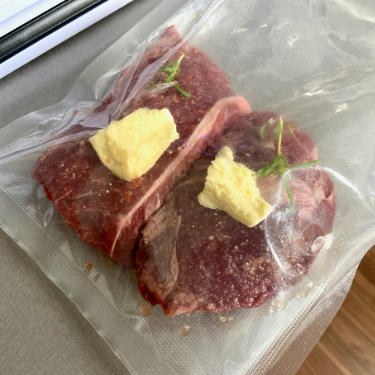
That’s why recycling a pickle jar with a conventional lid is a mistake. It might look good, but the screw on lid may not guarantee a vacuum seal after processing.
Mylar bags block light and are often vacuum sealed with a vacuum sealer and the seam seal with heat to maintain the vacuum. What’s important is to use the proper packaging for both the food and the type of processing techniques.
What to do instead:
Use packaging designed for long-term preservation—like mason jars with new lids for canning, or heat-sealed Mylar bags for dry storage—to ensure airtight seals and protect against contaminants.
Improper Processing
There are two fundamental food processing techniques typically used for canning foods. One is pressure canning, and the other is hot water bath processing.
Hot water bath processing is usually used for acidic foods or foods in an acidic solution, like vinegar or citrus juice.
Pressure canning is usually used for foods that are alkaline or blended food combinations like chili, soups or stews.
Both processes also have timing requirements that vary for different types of foods. If the wrong processing technique is used or the timing is incorrect, the quality and safety of the food is compromised.
What to do instead:
Follow trusted canning guidelines precisely—use pressure canning for low-acid foods and hot water baths for high-acid foods—and always adhere to recommended processing times to kill harmful bacteria and prevent spoilage.
➡️ The deadly canning mistake the Amish never make (but most Americans do… without even realizing it)
Improper Storage
Prep, packaging and processing are the giant first steps in food preservation, but quite often improper storage accelerates spoilage and food degradation. Some of the ideal storage techniques include freezing, refrigeration, root cellars and the proverbial cool, dark place. But even in those relatively safe storage environments accidents can happen.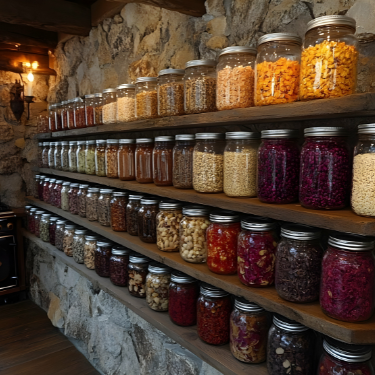
Freezing can result in freezer-burn, bursting of packages, cans and jars and over time allow bacteria to reside. It’s when the frozen food is thawed that residual microbes can emerge, unless the food is cooked at the proper temperature.
What to do instead: Use airtight, freezer-safe containers or vacuum-sealed bags to prevent freezer burn and package damage. Store frozen foods in reliable freezers that maintain consistent temperatures, avoiding freeze-thaw cycles. Thaw food safely in the refrigerator or cold water, and cook promptly to kill any bacteria.
Freezing and thawing occur when foods are exposed to a cycle of varying temperatures above and below freezing. This can occur in garages, sheds, back and front porches or any area not moderated by steady temperatures consistently above or below freezing. The effect of freezing and thawing is the gradual deterioration of the structural integrity of the foods, color and flavor. Worse, the breakdown of the food could create an environment that stimulates bacterial growth.
What to do instead: Store frozen foods only where temperature is reliably steady, ideally inside insulated freezers indoors. Avoid unheated spaces where temperatures fluctuate above and below freezing to preserve food quality and safety.
Refrigeration is a wise food storage option, but the true shelf life of some foods like vegetables is measured in weeks under refrigeration. Fully processed and packaged foods do well under refrigeration, and it will extend shelf-life, but microbes like botulinum, which leads to botulism, can survive in a refrigerated environment especially if the food was not properly processed or stored too long.
What to do instead: Keep refrigerated foods at consistent temperatures below 40°F, store vegetables in crisper drawers with humidity control, and never keep perishable items beyond their recommended shelf life. Label foods with dates and inspect regularly, discarding anything suspect.
Root Cellars are the go-to solution for food storage and is the usual off-grid solution. But lids on canning jars can rust and seriously compromise foods in metal cans, so always pay attention to that. The result is that the food inside can be exposed to the surrounding air and possible bacterial contamination.
What to do instead: Regularly inspect jar lids and metal cans for rust or damage, replace lids when necessary, and ensure your root cellar stays at a steady 32–40°F with 85–95% humidity. Use thermometers and hygrometers to monitor conditions and keep the environment ideal for preserving food safely.
Pantries are the usual cool, dark place but any excessive heat, direct sunlight or humidity can cause foods to quickly degrade even when properly packaged.
What to do instead: Store dry goods in airtight containers, keep your pantry away from sunlight and heat sources, and control humidity with moisture absorbers if needed. Rotate your stock to use older items first and check regularly for signs of spoilage or pests.
Proper storage is critical, but the storage area should be monitored to ensure the temperatures are consistent and the humidity levels are in line with the food being stored.
Time
Even under the best conditions, many foods will eventually spoil. Everything has a shelf-life and one of the basic mistakes many people make is failure to rotate. As new foods are preserved or stored, older foods should be consumed or at least brought forward on the shelf for the next meal.
It’s also important that you label and note only write the date the food was preserved, but it’s expected expiration date.
What to do instead:
Practice the “first in, first out” rotation method by labeling all stored food with preparation and expiration dates. Regularly check and consume older foods before newer batches to avoid spoilage and waste.
Remember: “PPPST”
PPPST stands for the proper Prep, Packaging, Processing, Storage and Time. Those are the fundamental guidelines for safe food storage. But whether you’re storing commercially packaged and processed foods or foods that you’ve canned and preserved yourself, it’s important to remember that all are subject to the effects of storage and time. If you’re ever in a situation where you’re not sure about the food you’ve stored remember the final rule: If in doubt, throw it out.
Do NOT Store Your Dry Goods Like This
The Silent Stockpile (Killer). Do You Have It In Your Pantry? (Video)
10 Canning Recipes From The Amish

